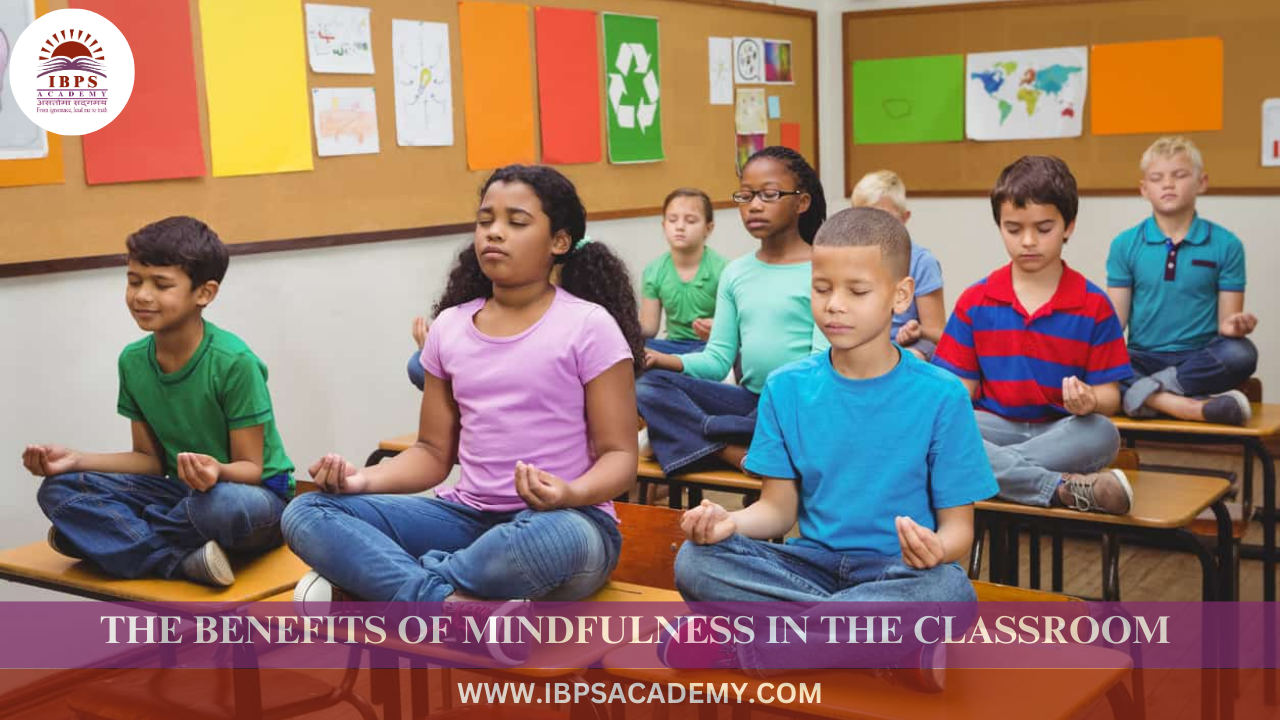THE BENEFITS OF MINDFULNESS IN THE CLASSROOM
Published on: Feb 01, 2025
THE BENEFITS OF MINDFULNESS IN THE CLASSROOM
Mindfulness in the classroom can have a wide range of benefits for both students and teachers, creating a more focused, calm, and positive learning environment. Here are some key advantages:
1. Improved Focus and Attention
- Mindfulness exercises can help students improve their ability to focus and stay present in the moment. By practicing mindfulness, students learn to control distractions, which leads to better concentration on lessons, tasks, and assignments.
2. Reduced Stress and Anxiety
- School can be stressful, with academic pressures, social challenges, and extracurricular demands. Mindfulness techniques such as deep breathing, body scanning, or guided meditation can help students manage and reduce anxiety, creating a calmer classroom atmosphere.
3. Enhanced Emotional Regulation
- Mindfulness encourages emotional awareness and self-regulation. By practicing mindfulness, students can become more aware of their emotions and reactions, helping them respond thoughtfully to challenges rather than reacting impulsively.
4. Better Relationships and Empathy
- When students practice mindfulness, they become more attuned to their own feelings and the feelings of others. This can improve peer relationships and foster greater empathy, leading to a more compassionate classroom environment.
5. Improved Behavior
- Mindfulness has been shown to reduce impulsive behaviors and improve self-control. Students who practice mindfulness are often better at managing their actions, which can lead to fewer behavioral disruptions and a more peaceful classroom dynamic.
6. Increased Self-Awareness
- Mindfulness helps students become more aware of their thoughts, feelings, and behaviors, which can support personal growth and academic improvement. This self-awareness can also help students identify their strengths and areas for growth, promoting a growth mindset.
7. Better Academic Performance
- By improving attention, reducing stress, and enhancing emotional regulation, mindfulness can contribute to better academic performance. Students who are less distracted by anxiety and more focused on the task at hand are likely to perform better in their studies.
8. Fosters a Positive Classroom Culture
- When both students and teachers practice mindfulness, it can create a more harmonious and positive classroom atmosphere. It encourages a sense of community, reduces conflicts, and creates an environment of mutual respect and support.
9. Supports Teacher Well-being
- Teachers benefit from mindfulness practices as well. It can help reduce burnout, stress, and fatigue, allowing teachers to maintain a calm and focused presence in the classroom. This, in turn, can improve their teaching effectiveness and overall job satisfaction.
10. Long-Term Life Skills
- The benefits of mindfulness extend beyond the classroom. Students who practice mindfulness regularly develop skills like patience, resilience, and emotional intelligence, which can help them navigate challenges in their personal and professional lives.
CONCLUSION
By integrating mindfulness into the classroom, educators can help students not only succeed academically but also develop important life skills that can benefit them well into adulthood.


